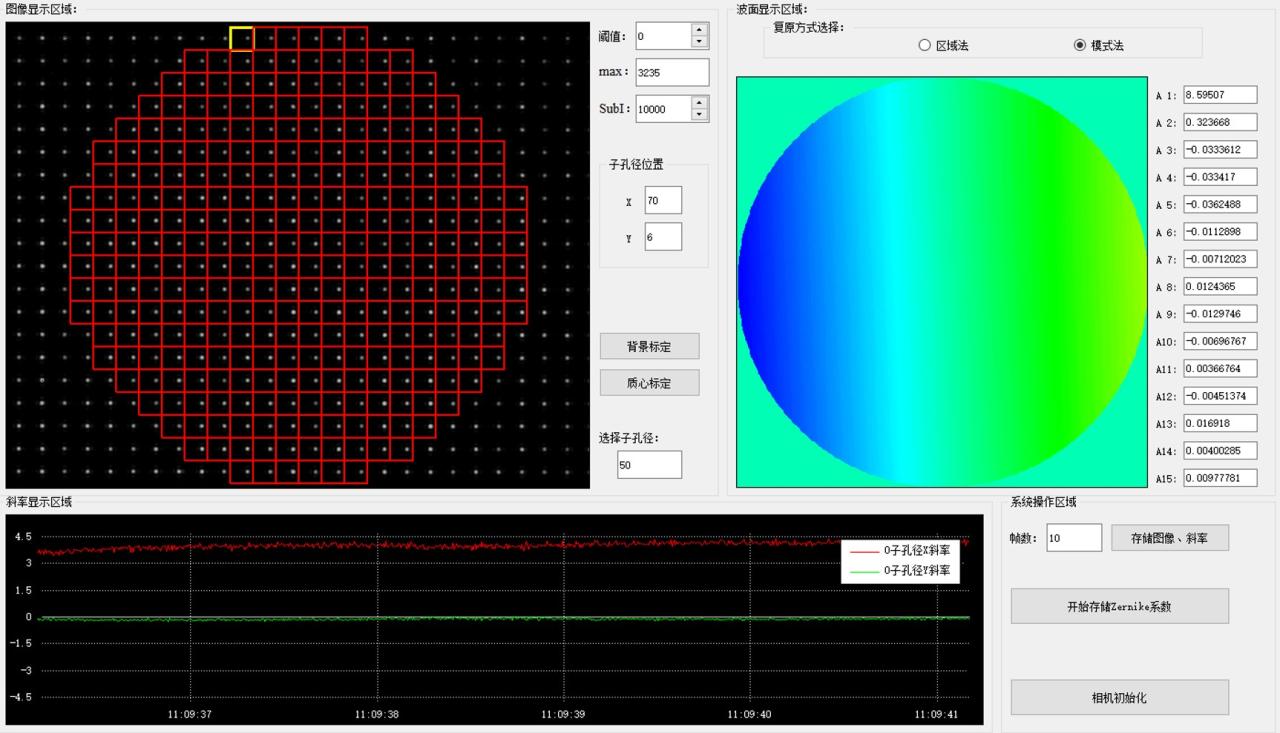- Home
- Adaptive Optics
- Hartmann wavefront sensor
Hartmann wavefront sensor
- 描述
- Brand
描述

Surise-Hartmann wavefront sensor
Wavefront sensors use microlens arrays to split the incident beam into a series of smaller beams, each of which is imaged on a CCD camera placed on the focal plane of the small lens array. If a uniform plane wave is incident on the Shack-Hartmann wavefront sensor, a focused spot will be generated along the optical axis of each microlens unit, producing a regularly arranged spot grid in the focal plane. However, if it is a distorted wavefront (i.e. any non-planar wavefront), the focus will deviate from the optical axis of the microlens unit. The distance from which the center of each spot deviates is proportional to the wavefront slope of the small lens position. The wavefront phase can be reconstructed based on the spot shift information obtained (within a constant range).
Wavefront sensors can be used in various fields such as laser beam parameter measurement, adaptive optics, component surface quality analysis, optical system quality analysis, atmospheric disturbance measurement, real-time control, and high-power laser systems. The basic principle of this product is based on Shaker-Hartmann wavefront sensing technology, which can realize wavefront detection (900-1700nm) in a wide spectrum through special technical processing, which is easy to use and can be measured directly, and the optical path is easy to build.
Can be customized according to the different parameter needs of customers!
| Model | wavelength | Number of microlens arrays | Camera resolution | Pixel dimensions | precision | frequency |
|---|---|---|---|---|---|---|
| Surise-SH | 400-1100nm | ≥10×10 | ≥300×300 | 25μm | λ/100 | 200Hz |
| Surise-SH-InGaAs | 900-1700nm | 20×20 | 500×500 | 20μm | λ/100 | 100Hz |
Product Features:
- Highly customizable, different cameras (visible or infrared), different microlens arrays (10×10 – 100×100), optimized sampling frequency for different applications (10Hz – 1000Hz)
- Enables the display of wavefront, array spot images and the Zenik coefficient
- Images, slopes and Zenik coefficients can be stored
- Thresholds can be set to remove background noise
- The background can be calibrated to measure the relative change in the wavefront
- High accuracy;
- High stability;
- Long life and easy maintenance.


Brand
OEfind
Related products
ALPAO high-speed deformable mirror
$30,000.00
Hot Air Atmospheric Turbulence Simulator
$30,000.00
Turbulence simulator
$10,000.00



